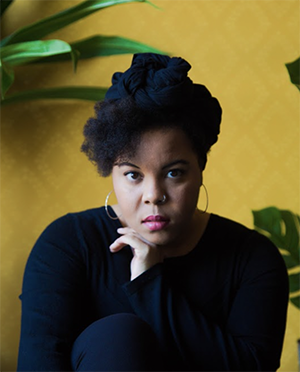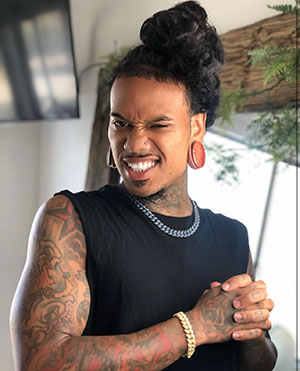Black Family

An African proverb says, “It takes a village to raise a child.” The Black family is a part of that rich, complex, and essential village a Black Deaf child needs to thrive. Because Black Deaf individuals must navigate two or more marginalized identities, family support is critical (Creamer, 2019).
Ninety-six percent of Deaf children are born to hearing parents (Leigh et al., 2020) who often have limited to no exposure to Deaf people, communities, or culture before having a deaf child. These families often lean on doctors and other social service professionals for support and guidance. California was one of the first states to put legislation forward to support Deaf children and their families in navigating education, language, and culture. The ruling supported and funded the Language Equality and Acquisition for Deaf Kids (LEAD-K). LEAD-K supports families by providing them with Deaf mentors, language bench marks, and other educational services.
Some families learn sign language when given support and fully immerse themselves and their children into the deaf world. These families often create safe and inclusive environments where a Black Deaf child can develop a Black and Deaf identity more fully. When families of Deaf children cannot communicate in American Sign Language, it can create communication barriers, challenge family dynamics, cause a Deaf child to feel isolated, and increase inner struggles with Black and Deaf identity development (Creamer, 2019). Ultimately, for Black Deaf children to thrive, hearing Black families need culturally sensitive, relevant, and timely resources so they can make the best decisions possible for their children.
About 4% of Deaf children are born to Deaf parents. Many of these families have a genetic heredity reason for deafness within the family (Leigh et al., 2020). Generationally, Black Deaf families can pass down the history and story of Black Deaf life and Black American Sign Language (BASL). Deaf and hearing children born to Deaf parents have a unique lived experience. If their parents use sign language (e.g., Black American Sign Language or American Sign Language), often this is their first language before any verbal language (e.g., English). These children are often called KODAs ( Kids of Deaf Adult) until they are 18 and CODAs (Children of Deaf Adult) after that. Some Deaf or hearing children have Deaf siblings or grandparents and are referred to as SODAs (Sibling of Deaf Adult) or GODA (Grandkid of Deaf Adult). There is limited research or social visibility of Black CODAs. Many become interpreters like Dr. Anthony J. Aramburo, who was the first president of the National Alliance of Black Interpreters (NAOBI), and Dr. Shirley Childress, who was the first to receive national certification from the Registry of Interpreters for the Deaf (RID) and is well known for her long musical interpreting career with the acapella group, Sweet Honey in the Rock. Black CODAs, SODAs, and GODAs are an essential part of the Black Deaf community and are often active members who make significant contributions to Deaf life. For example, Clara Jean Mosley Hall and Maxine Childress Brown both wrote their family’s stories in the books Paris in America: A Deaf Nanticoke Shoemaker and His Daughter and On the Beat of Truth: A Hearing Daughter’s Stories of Her Black Deaf Parents, respectively.
The challenges and successes of Black Deaf individuals within family units are not a monolith. We are grateful to our community members for sharing insight into their family bubbles and what it was like growing up Black and Deaf in their homes.
ReferencesCreamer, E. A. (2019). Black Deaf persons and their families: Ecological and systems
Perspectives. JADARA, 34(1). Retrieved from
https://repository.wcsu.edu/jadara/vol34/iss1/4
Leigh, I.W., Andrews, J.F., Harris, R., & Avila, T.G. (2020). Deaf culture: Exploring Deaf
communities in the United States (2nd ed.). Plural Publishing.

Ashlea Hayes
Ashlea Hayes was born and raised in Compton, CA. She was bitten by the acting bug in 2009, stemming from her love of storytelling as a child. In 2011, she joined the SAG-AFTRA union and has been honing her craft ever since. Ashlea has been active in the Deaf community for 27 years. She has been involved in several community organizations, all with the goal of empowering the Deaf community as well as educating the Hearing community about Deaf Culture. When she isn't volunteering her time to the community, or working on a new production, she is teaching ASL at Fusion Academy and El Camino College.
Watch Interview with Ashlea Hayes
Interviewer: Angellé Thomas


Shaheem Sanchez
Shaheem Sanchez, aka deafdancershaheem, became deaf at the age of 4. He was exposed to music at a young age and fell in love with it. Though his father passed before he was born, his family told him stories about his father’s dance skills and he thought, why not give dance a shot? He started dancing at the age of 11. Dance has become a very important part of his life. He loves to feel the music, go with the flow, and feel the peace that comes from dance. By feeling the beat and reading the body language of his collaborators, Shaheem is able to connect to the music and express himself. He is currently working as a successful professional dancer. It is important to him to show that deaf people can do anything, because anything is possible.
View his dance video: Oh Wonder - Lose It | Deaf Dancer | #JustLoseIt
Watch Interview with Shaheem Sanchez
Interviewer: Angellé Thomas


